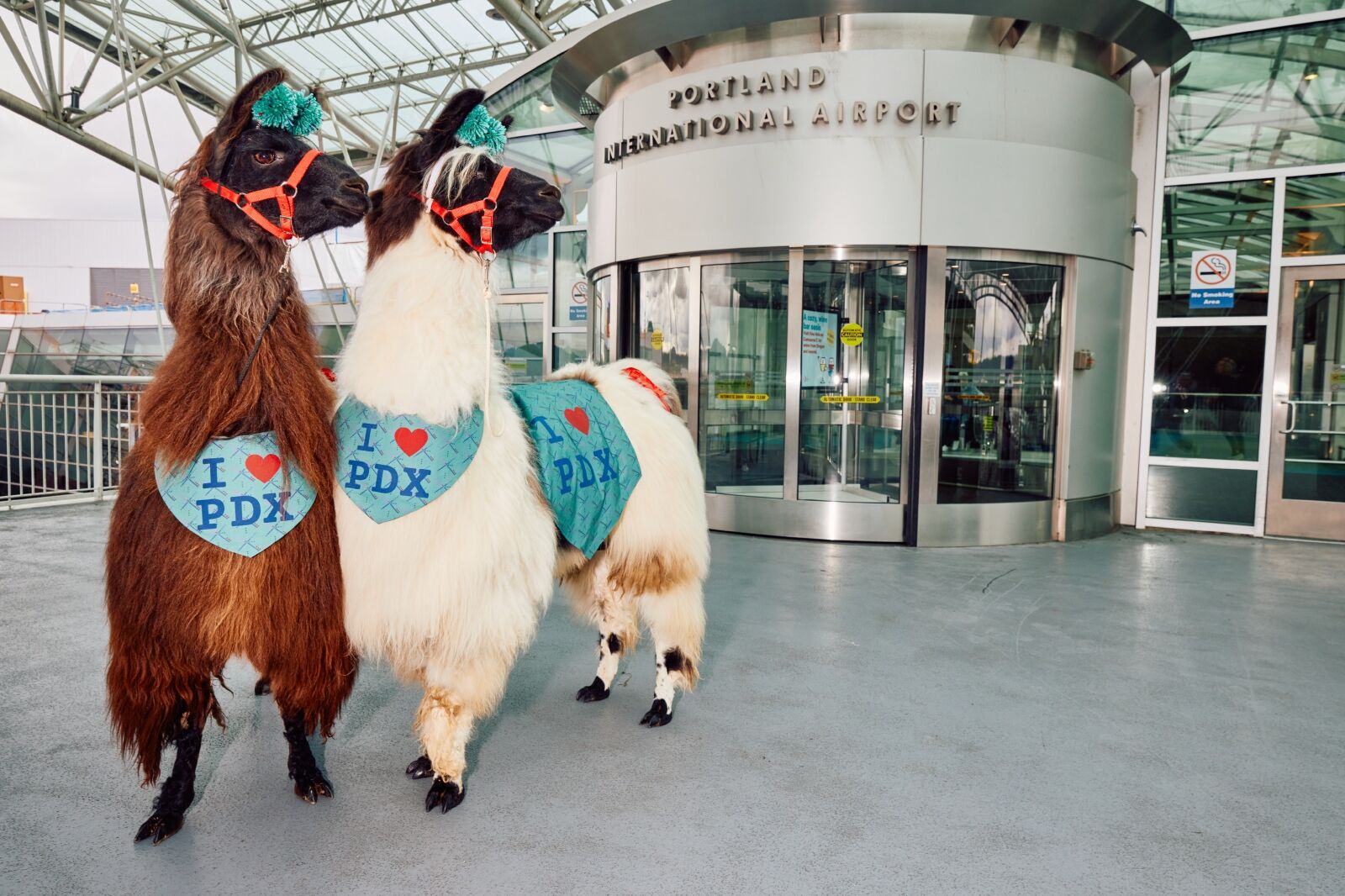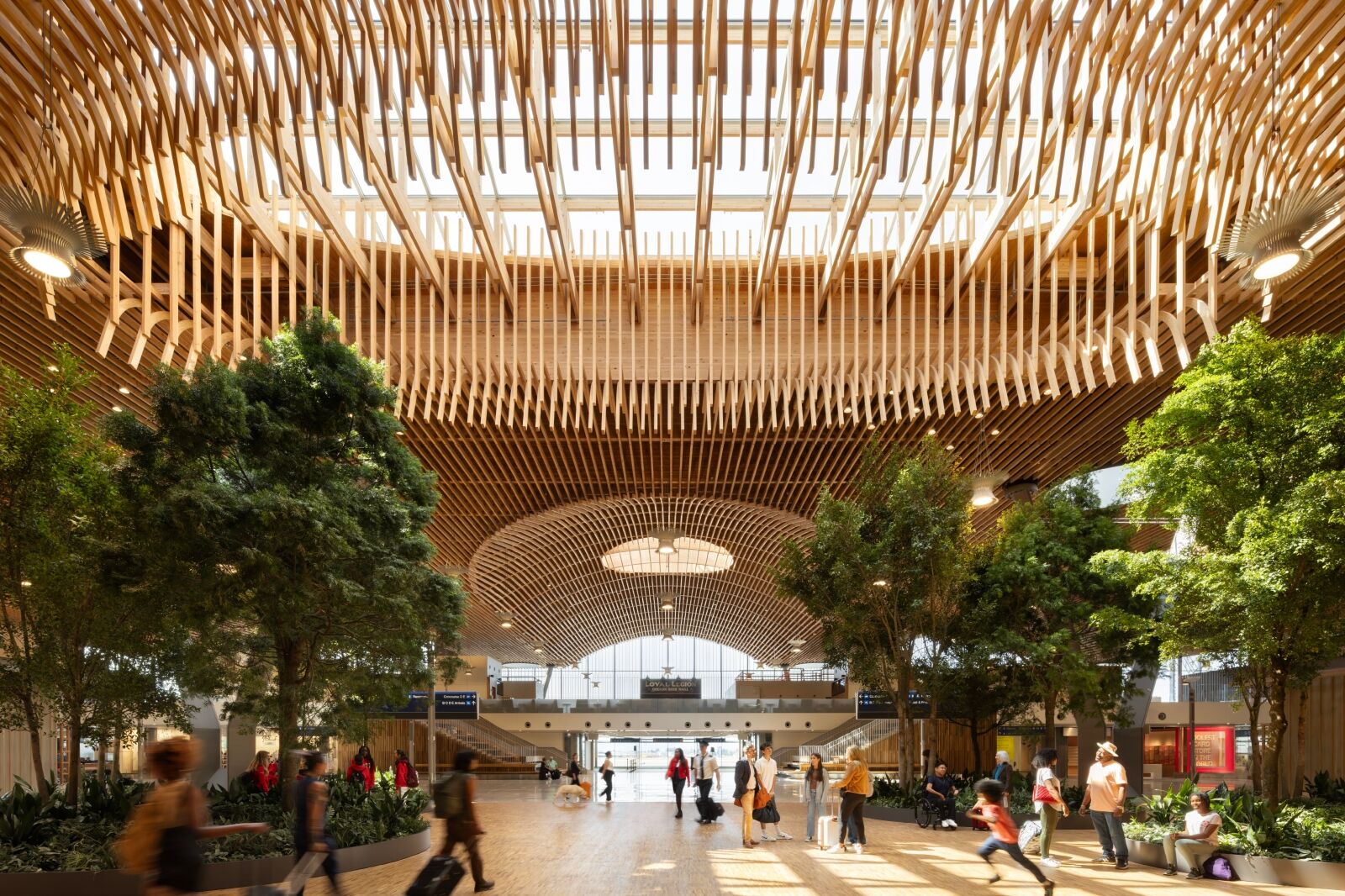As an anxious traveler, I arm myself with a toolbox of aids — noise-canceling headphones, meditation apps, and essential oils — to make airports bearable. I fork out for lounge access, too, just so I have a safe corner to retreat and distance myself from crowds of people. But animal therapy at an airport has never occurred to me. It sounds like an oxymoron.


What Llama Experts Think About the Portland Airport's 'Therapy Llamas'
Coming from the countryside and having horses on the farm, I appreciate the benefits of being in the company of animals, and they appreciate their comfortable surroundings. I’m grateful for their companionship every day; however, when I read that Portland International Airport (PDX) has therapy llamas for passengers to hug in airport hallways, I couldn’t help but question whether these gentle creatures want to be in an environment with strip lights, booming PA announcements, and throngs of people. So, while navel-gazing and dwelling on my consternation over hordes of strangers, I reached out to PDX and a handful of national organizations that work with llamas to see why this wellness initiative got off the ground and if the llamas employed to quell the stress of passengers are happy getting hugged from passersby.

Photo: Michael Raines
Therapy llamas were introduced to PDX’s concourses this past summer as part of the airport’s animal therapy program. The gentle giants hail from Mountain Peaks Therapy Llamas and Alpacas in Ridgefield, Washington. Every few weeks, the llamas, adorned with “I heart PDX” neckerchiefs and stylish headbands, stroll through the airport to provide comfort and spread joy.
Having support animals at PDX is part of the airport’s larger initiative to bring nature indoors. “The new PDX was designed based on the concept that nature helps you breathe a little easier,” says Allison Ferre, spokesperson for the Port of Portland. This summer, PDX unveiled a new main terminal inspired by Pacific Northwest forests. The terminal’s expansive roof, crafted entirely from sustainably sourced Douglas fir, is the largest mass timber construction of its kind in the US. And the terminal is filled with live trees and plants that bathe in natural light, bringing a sense of calm to what can often be a very stressful environment.

Photo: Portland International Airport
/Ema Peter Photography
With the same goal in mind, Ferre continues, socialized therapy llamas that “visibly enjoy human interaction” have been introduced to offer comfort to travelers. Being around groups of people is not new to the llamas. They travel the region offering therapeutic and educational interactions. Llama welfare non-profit organizations claim the animal’s calm and gentle demeanor can profoundly impact emotional well-being.
The benefit of having animal therapy in airports is shared across the board with the national llama organizations I reached out to.
“We’ve found the PDX Airport to be one of the best year-round environments for reducing stress and anxiety among the most diverse population of all ages and abilities,” says Lori Gregory, president and founder of Mountain Peaks Therapy Llamas and Alpacas. Before introducing the treasured llamas to PDX, the organization has worked with Portland communities since 2007. Gregory adds the llamas have taken to the environment like ducks out of water. The airport is within a short drive from the farm and is “safe, clean, and climate-controlled,” so there are no stressors, and the therapy animals very much enjoy interacting with the public.
“I think it’s wonderful to have the llamas greeting folks in an environment like an airport. There, people are stressed and hurried — the llama’s presence invites people to slow down, come to their senses, and connect to the more-than-human world (qualities we could all experience more of),” says David Wynn of Llamas of Hot Springs, a farm near the intersection of the Appalachian Trail in North Carolina. Wynn shares the opinion that the therapy can be “llamazing.” The llamas under his care often visit places such as college campuses during exam season, adding that events are limited to two hours, with a handler per animal who prioritizes their needs.
George Caldwell, who has worked with llamas for nearly 40 years and runs Llamas of Circle Home in Sonora, California, shares that not all llamas can do this work. “It takes a level of understanding of the people/llama relationship to be at ease in the hectic world of people, but some llamas are willing and comfortable helping in whatever capacity they can,” Caldwell says, adding that these seasoned professionals (both the animals and their handlers) are familiar with environments like airports with large crowds of people.
Although experts agree that the potential for healing through interactions with llamas has yet to be thoroughly researched, the animals seem to spread joy, which I think we can all agree we need a little more of at the moment.